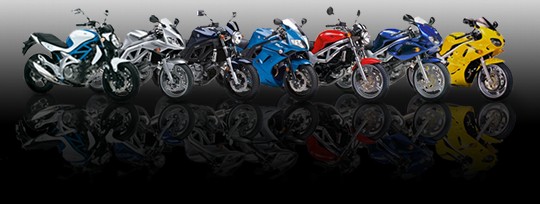 |
 |
| SV Talk, Tuning & Tweaking Discussion and chat on all topics and technical stuff related to the SV650 and SV1000 Need Help: Try Searching before posting |
 |
|
|
Thread Tools |
|
|
#11 |
|
Guest
Posts: n/a
|
I've read several articles telling its better to trash a new engine when warmed up.
I did it the old way though |

|
|
|
#12 | |
|
Member
Mega Poster
Join Date: Jul 2003
Location: Warwickshire
Posts: 2,801
|
Quote:
The process is about getting controlled wear during break-in so that surfaces eventually conform. The surface finishes on components (mainly rings and bores) as machined are specifically produced to provide an appropriate wear regime. In the early stages the high spots are in contact, and will wear away nicely. The oil will prevent the metal molecules bonding providing the oil can withstand the contact conditions. However, because the contact pressures locally are very high, if the sliding speed is too high it generates too much heat, the oil can't survive, and you get micro-welding and tearing of the surfaces instead of simple wear. Therefore you start off for a short time with low speeds and loads to let the wear surfaces get a bit larger to reduce the contact pressure, then gradually increase speeds and loads to maintain the wear process until the true contact area is big enough to then continue with normal wear rates. This ensures the optimum performance, oil control, blowby control and lifetime of the engine. That's why it's important to use higher loads and speeds towards the end of the break-in, otherwise the surfaces can polish before there's an optimum contact area developed. .........but hey, it's your engine. |
|
|
|

|
|
|
#13 |
|
Guest
Posts: n/a
|
Very well written embee, a good clear understanding of what is going on during those 1st. 1000 miles or so.
I'll bear this in mind when my running in is due. |

|
|
|
#14 |
|
Guest
Posts: n/a
|
Another good point I'd say from friends who work with greasy bits n a suzuki dealer who gave me a decent explantation was that the oil first in, that is the oil you ride away with new is much thinner than the regular normal oil you'll have after 1st (500mi) service. So don't cane it with the thin oil. Make any sense? logic? I think there's something in there
|

|
 |
|
|
 Similar Threads
Similar Threads
|
||||
| Thread | Thread Starter | Forum | Replies | Last Post |
| Limits of brakes? | Daimo | Bikes - Talk & Issues | 6 | 04-09-08 04:37 PM |
| SV performance and limits | Villers | SV Talk, Tuning & Tweaking | 21 | 28-03-07 04:28 PM |
| Know your limits! I'm not too sure that I do! | krhall | Bikes - Talk & Issues | 36 | 05-12-06 07:49 AM |